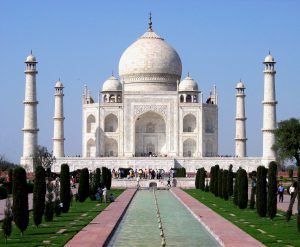Or where to spot the most stunning wildlife? Browse our places to see before you die and see how many you can tick off your bucket list…
Photo source: PublicDomainPictures http://bit.ly/2CqF8dq
Swim, snorkel and dive Australia’s Great Barrier Reef
Explore the living masterpiece that is the Great Barrier Reef by swimming, sailing, snorkelling and diving. The World Heritage-listed attraction stretches more than 2,000km along the Queensland coast and can be seen from outer space. Hop between the idyllic, palm-fringed islands and discover the bright coral and marine life. Visit Heron and Wilson islands during the annual turtle nesting season (November to March) where you can witness hatchlings scurrying to the sea.
Gaze at the Northern Lights from a glass igloo in Finnish Lapland
The Northern Lights are one of nature’s phenomenon’s that you need to see to believe. With easy access to the natural light display, snowy wilderness and reindeers, Finnish Lapland is a magical place to spot the Aurora Borealis. Instead of watching them outside in freezing temperatures, why not spot the lights from the comfort of your own heated glass igloo? It means you can spend the night gazing at the sky from your bed and wake up to the spectacular snow-covered scenery.
Marvel at mysterious Stonehenge
An unforgettable day out and one of Britain’s most wonderful attractions, Stonehenge is a highlight of the South West and probably the most famous prehistoric monument in the world. It comes with a mysterious history and was built around 5,000 years ago. Was it a temple for sun worship? A healing centre? A burial site? Or maybe a huge calendar? The World Heritage Site never fails to impress and is surrounded by prehistoric landscape, perfect for a walk in the beautiful Wiltshire countryside.
Take an outdoor bath in Budapest
Soak up the atmosphere of Budapest in the winter when the locals and tourists hit the city of baths’ outdoor thermal pools to keep warm, socialise and enjoy the healing waters. The Szechenyi has an enormous neo-Baroque courtyard with a bath and one of its best sights is the dedicated chess players with their floating cork boards! The Gellert is known as the finest of all the bath houses with its main indoor pool – perhaps the best example of Hungary’s neo-classical architecture. Rudas and Kiraly are other historic baths in the city.
Feel the freedom of an American road trip on Route 66
It’s inspired songwriters, novelists and filmmakers, and Route 66, the Mother Road of America makes for an epic journey across the States, stretching for 2,400 miles from Chicago, Illinois to Santa Monica, California. Route 66 crosses eight states: Illinois, Missouri, Kansas, Oklahoma, Texas, New Mexico, Arizona and California. Spend 16 days exploring the route and stopping at attractions, such as St Louis’s jazz clubs, Oklahoma City, the desert scenery of Santa Fe, the vast Grand Canyon and the Las Vegas Strip.
Scottish Highlands
The Highlands of Scotland are filled with some of the most incredible scenery in the world. Here, you’ll feel as if you’ve walked into a painting, with towering heather-covered mountains, picturesque lochs, cascading waterfalls and magnificent, ancient castles.
Take a dip in Iceland’s Blue Lagoon
Fed by naturally-heated and mineral-rich seawater, Iceland’s Blue Lagoon is the country’s most unique attraction, located 40 minutes from Reykjavik. The extraordinary pool is where you can take off your thermals and bathe in the water, reaping the benefits of the geothermal water. Be sure to smother yourself in the white silica mud and take your natural spa experience to the next level by sweating in the sauna with a view of the lagoon and standing underneath the waterfall for an energising massage. Bliss!
The Taj Mahal
The 17th century jewel in India’s crown has been attracting tourists and royalty alike for centuries. It was commissioned by the emperor as a tomb for his favourite wife, and that sense of lavish romance spills into the 21st century. Pose for a photo on that bench – made famous by Diana and recreated by William and Kate – and then explore Agra by bike. Sundown on the Yamuna will be an unforgettable end to the day.
